Urns with the ashes of stratonauts
Cemeteries speak better about the history of Russia than all the textbooks and howls of propagandists. Novodevichye is a cemetery where the founders of the state lie, their graves are the foundation of Russia.
Novodevichye is the second most important cemetery in Russia. The first is the Mausoleum and the Kremlin wall. But today Novodevichye is becoming the main burial place for distinguished persons.
There are never many people at Novodevichy (unless someone important is being buried, but there are very few significant people these days). During a 4-5 hour tour of the cemetery, it’s good if you meet 30-40 people. This is not counting foreign tourists- they bring them in large groups, but they are led to see only 10-15 “main” graves - Yeltsin, Chaliapin, Nadezhda Alliluyeva, etc. Most of the tombstones, fences and monuments are unkempt, rickety, areas are overgrown with weeds, the inscriptions have been erased by time. There are a lot of thrushes and starlings in the tree branches, but for some reason there are no crows at all.
Alfred Schnittke
Arkady Raikin
Belaa Akhmadullina
Artyom Borovik, journalist
Nobel laureate, academician Ginzburg
Legendary personality - Ari Abramovich Sternfeld. Dry lines of biography about him:
He calculated and theoretically studied many space flight trajectories, determining the energetically optimal ones. These trajectories, with a preliminary distance from the target, allowing significant fuel savings, are called “Sternfeld”. He introduced the concept of cosmic velocities and calculated their starting values. Formulated the problem of the existence of “space navigation seasons.” The terms “cosmonautics” and “first cosmic velocity” were introduced by him for the first time in his book “Introduction to Cosmonautics” (1934; in Russian - Moscow, 1937). For the first time, he applied the theory of relativity to analyze interstellar flights, to improve the accuracy of trajectory calculations, and proved that reaching the stars is, in principle, possible during a human lifetime.
Back in 1932, Sternfeld, at the invitation of the People's Commissariat of Heavy Industry, came to Moscow to formalize his project on an android robot. Android, like two other inventions: devices for recording the movements of human organs and a screw press with controlled force, Sternfeld proposed using when performing labor-intensive and dangerous work on earth and in space.
In 1934, through the USSR Trade Representation in Paris, Sternfeld transferred a copy of his typewritten manuscript to French“Initiation à la Cosmonautique” (“Introduction to Cosmonautics”) in Moscow.
A year later, in June 1935, having left almost all of his scientific and personal archive from his parents in Lodz and taking only the essentials, he and his wife come to the Soviet Union for permanent residence.”
Well, then the theoretical and practical work in closed research institutes for astronautics. Interestingly, it was Sternfeld who first introduced Europe to Tsiolkovsky, whom he considered his teacher, corresponded and was friends with him until his death. In 1932, he translated and published part of Tsiolkovsky's works in the French communist newspaper L'Humanité. At the same time, Tsiolkovsky sent him his photograph, and the world saw the face of the Russian cosmologist for the first time on the pages of Western media.
Surgeon Bakulev
Poet Velimir Khlebnikov and his relatives
General Eternal and his wife. And what is Pyotr Zigmundovich “Vernon Kress” (writer Demant) doing in this grave?
He is a subject of Austria-Hungary, lived in Bukovina. After the collapse of the empire, he graduated from universities in Brno and Aachen, Germany, and served as an officer in the Romanian army (Bukovina then went to Romania). In 1940 he became a Soviet citizen. On June 13, 1941, among a large group of Chernivtsi Jews, he was arrested by NKVD officers and on June 18, deported to Siberia (Narym Territory).
Peter Demant managed to escape from the settlement (Pudino), but after 5 months of taiga wanderings he was caught, accused of spying for Austria and sentenced to 5 years in the camps and 5 years of loss of rights. Soon after his release, he was arrested again and convicted on charges of counter-revolutionary activities. From September 1946, he served time in the Asino camp in the Tomsk region, then worked on a pig farm in the Usvitlovsky invalid camp, at the New Pioneer mine.
Released in 1953 under an amnesty, he worked for 23 years as a loader in the trading office of the labor supply department in the village of Yagodnoye. Magadan region. In 1975 he received a passport.
In 1978, he was allowed to move to Crimea. Having married Irina Petrovna Vechnaya, the daughter of a prominent Soviet military leader, he got the opportunity to go to Moscow with her. At the same time, without hope of publication, he began to write prose of a memoir nature. In 1992, the publishing house published a small edition of the writer’s memoirs about camp life, “Zekameron of the 20th Century.”
A number of mass graves are victims of the crashes of airships and the Maxim Gorky plane in 1936-38. The ashes of these people are mounted in the wall of the Novodevichy Convent:
Director Dziga Vertov
Several thousand urns containing ashes are built into the walls of the cemetery. These are mainly burials from the 1930s-60s. Very often epitaphs, poems, and parting words are engraved on the slabs there.
The grave of the first president of Russia - Yeltsin. There are very few flowers from fans of his work. Ironically, he is buried close to the grave of the magician Kio
And here is Kio’s grave itself:
Young Guard Zhora officially died three times. The first time Zhora was confused with another underground fighter, thrown into a mine in Krasnodonsk by the Germans and Cossack collaborators. The second - at the end of 1944 on the battlefield, confusing him with another fighter. And both times the mothers sent funeral messages for George. The third death turned out to be real - he died of cancer.
Pyotr Andreevich Zalomov is the prototype of the hero of Gorky’s novel “Mother” by Pavel Vlasov.
Born into a working-class family, a mechanic by profession. Organizer of an anarchist circle in Nizhny Novgorod. He was one of the leaders of the May Day demonstration of 1902 in Sormovo, carrying a red flag with the inscription “Down with autocracy!” During the demonstration he was arrested and at the trial he made a speech directed against the monarchy. He was sentenced to lifelong exile in Eastern Siberia.
In March 1905, with the assistance of A.M. Gorky, who sent 300 rubles to organize the escape, he escapes from exile. Together with the Bolsheviks, he participated in the Moscow December uprising of 1905, and organized military squads.
It is interesting that he joined the CPSU(b) only in 1925. ABOUT later life it is reported briefly - “on economic and party work”:
Alexander Zinoviev, philosopher and dissident
Academician Igor Tamm
The graves of the numerous Ilyenkov clan, the founder of whose dynasty is Vasily Pavlovich Ilyenkov (1897-1967), writer. Winner of the Stalin Prize. Member of the RCP(b) since 1918. Father of the philosopher Evald Ilyenkov.
V.P. Ilyenkov was born in 1897 in the village. Shilovo-Smolenskoye (now Dorogobuzhsky district, Smolensk region) in the family of a priest. After four classes at the Smolensk Theological Seminary, in 1915-1917 he studied at the Faculty of History and Philology of Yuryev University (did not graduate). In 1917 he was drafted into the army. In 1928-1930, editor of the newspapers “Our Village” and “Bryansky Rabochiy”. In 1930 he moved to Moscow, until 1932 he was the organizational secretary of RAPP. In Moscow, he lived with his family in the famous “writer’s house” on Kamergersky Lane:
Journalist and writer Ilya Erenburg
Joseph Hamburg, one of the famous militants of the RSDLP. There are the following lines about his time in the royal prison:
“The friendship between Hamburg and Frunze was cemented in the Alexander Central, where they were transferred in August 1914.
Politicians were placed together with criminals. The barracks were densely packed with prisoners, but there were three times as many bedbugs in it. Bedbugs shared food, people shared space. Clashes broke out constantly.
Someone poked Hamburg in the side: “Go to the bucket, you idiot!” Joseph, a militant convicted of barricade fighting, did not remain in debt, and many reached out for sharpening. A stabbing was brewing. Frunze jumped off the bunk and shouted to the criminals: “If you start a fight, we’ll kill you, you won’t get any bones.” Remember these words! It sounded pretty impressive. The classes fell silent, and since then quarrels have become rare, and the new “authority” was chosen as the headman: everyone understood that no one could protect the interests of the prisoners before the administration as well as this man.”
An interesting monument for 1962, especially since the one lying under it is an ordinary teacher
Academician Landau and his family
General Lebed, Yeltsin's failed successor
A rare case in the Soviet era when a deceased person is immortalized with an artifact of his field of activity
Chairman of the Communist Party of South Africa, adhered to the Stalinist version of communism, for which he was expelled from the party by his comrades-in-arms
Writer Yuri Nagibin
Actor Anatoly Papanov
Writer Panferov
Writer Yuzovsky
Directed by Ptushko (Ptushkin). The monument in the form of driftwood is 37 years old and has begun to collapse. A rare domestic director whose films received two international awards at once - in 1935 the prize of the Venice Film Festival for “The New Gulliver” and in 1953 the Silver Lion of the same film festival for “Sadko”
Monument to Raisa Gorbacheva; Perhaps the largest number of flowers is on her grave. But it’s sad that the thujas have dried up around the monument, and the caretakers don’t pay attention to it
English orientalist and, apparently, English intelligence officer Yuri Nikolaevich Roerich. He studied at three universities - the School of Oriental Studies at the University of London, the American Harvard and the University of Paris. He spent almost his entire life on expeditions in British India and Tibet. In 1941, he turned to London with a request to enlist him in the Red Army, received the rank of colonel of the Red Army, and served in the Himalayas during the Second World War. In 1957 he returned to the USSR
Old Bolshevik Alexey Isidorovich Rudenko. In 1939 he was sentenced to 5 years in the camps and 5 years in exile, and in 1954 he was rehabilitated. It is believed that he is the first author of an anti-Stalin poem on the death of Stalin, here it is:
So, it's over. Fuller, friends, glass.
Forever, historian, mint this date:
Today the Cockroach lay down in the coffin,
And only the mustache threatens us out of habit.
Let the name of God not leave your lips yet,
And, harnessed to a gun carriage,
High priests guide
Funeral march,
Let the cannon muzzles roar,
And an expert in spicy dishes
Russia, fed up,
The last one gives the salute,
Let there be no end to false chants
And crocodile tears, -
He's dead. And no balm
Its rot will not be drowned out.
Monument to traveler and TV presenter Yuri Senkevich
Monument to film director Sergei Gerasimov.
Monument to the artist Sergei Vasilievich Gerasimov -
Satirist Smirnov-Sokolsky. The first director of the Variety Theater. Owner of the largest private library in the USSR - about 15 thousand volumes. After his death, the library was valued at 6 million rubles
The wife of Felix Edmundovich Dzerzhinsky was born Sofia Mushkat. Auditor of the RSDLP cash desk in Geneva. She spent 8 years in Siberian exile. After the death of her husband - a major functionary of the Comintern and party historian
Monument pop singer Leonid Utesov
One of the most revered graves by fans is that of CDKA football player Fedotov. True, fans are too lazy to pull out the numerous weeds on the grave
Urns with the ashes of a family of Indian communists and intellectuals
Burial places of the large Khrushchev family
The modest grave of the former prime minister and “president for an hour” (he served as acting president during Yeltsin’s heart surgery) Viktor Chernomyrdin
Monument to the writer Yulian Semyonov, on the reverse side - to his relatives Lyandres
Son of Felix Dzerzhinsky. Worker of the Comintern, since 1943 - in the apparatus of the CPSU (b)
Vagankovskoe cemetery- one of the largest in Moscow. It was built in 1771 by order of Count Orlov.
This happened at a time when Russian Empire the plague was raging. The territory of the Vagankovsky cemetery was allocated for the burial of those who were killed by this disease.
Only in the 19th century did they begin to bury people in the cemetery outstanding personalities— about 100 thousand burials reflect the history of our state.
Participants of the Battle of Borodino, victims of Stalin’s repressions, participants of the Second World War (1941-1942), children who died in the terrorist attack on Dubrovka, various famous personalities are buried in the cemetery - in total more than 500 thousand Muscovites, while only 100 thousand of all burials have been preserved .
Where is the Vagankovskoe cemetery in Moscow?
The facility is located at the address: Sergeya Makeev Street, building 15.

The cemetery area is almost 48 hectares. This article will serve as a kind of guide between the areas where the graves are located famous people.
Diagram showing graves
The Vagankovskoye cemetery is very extensive, without any plan or diagram, it is impossible to get your bearings. The diagram presented in the photo shows the location of 60 burial sites, each of which has its own number.

Two are indicated mass graves And Orthodox Church. The paths between the sections also have their own names. Also, opposite the Vagankovsky cemetery, there is the Armenian cemetery, which is its branch.
Where can I get a complete list of burials?
A complete list of burials can be found at the cemetery administration or on special. resources. For example, here https://nekropole.info/ru/person/list?cemetery_id=3433 provides a list of all persons buried at the Vagankovskoye cemetery in Moscow.

Another interesting resource offers interactive map http://vagankovo.net/interaktivnaya-karta/. By clicking on any plot number, you follow the link and open a list of people buried here.
Which celebrities are buried
At the Vagankovskoe cemetery there are excursions for those interested, during which tourists will see the graves of famous personalities of our country - poets Bulat Okudzhava, Vladimir Vysotsky, Sergei Yesenin, artist Alexei Savrasov, actors Alexander Abdulov, Andrei Mironov, TV presenters Vladimir Voroshilov and Vladislav Listyev, and many others .
Grave of Vladimir Vysotsky
Vladimir Semyonovich was buried at the Vagankovskoye cemetery in 1980. His grave is located next to the entrance to the cemetery, on the right side.

Its site, number 1, still remains one of the most visited. His mother, Nina Maksimovna Vysotskaya, is buried next to Vysotsky.
The grave of Alexander Abdulov
A. A. Abdulov was born on May 29, 1953. The artist died on January 3, 2008. A few months before his death, he was diagnosed with lung cancer.

Alexander Gavrilovich was famous actor theater and cinema. Worked at the Lenkom Theater. We have lost count of the number of films in which Abdulov has starred. The quantity varies from 100 to 150 paintings. He was buried at the Vagankovskoye cemetery in plot number 2.
Grave of Georgy Vitsin
G. M. Vitsin was born on April 5, 1917. Due to chronic liver and heart diseases, Vitsin passed away on October 22, 2001. Georgy Mikhailovich was a theater and film actor. He worked at the Ermolova Theater. Was involved in more than 300 works.

People know him from such paintings as " Caucasian captive", "Gentlemen of Fortune". Unfortunately, in recent years throughout his life his work was no longer in demand. He was buried on October 25, 2001 at the Vagankovskoye cemetery on plot 12A.
Igor Talkov's grave
I.V. Talkov was born on November 4, 1956. He was a singer, actor, poet. Took part in 18 projects. During a concert at the Yubileiny Sports Complex in St. Petersburg, Talkov was shot. It was as if he had a presentiment of his death and knew how he would be killed.

He said that he would be shot at large quantities people, but the shooter will never be found. And so it happened. The killer of Igor Vladimirovich hid in Israel for a long time. The singer’s funeral took place on October 9; he was buried at the Vagankovskoye cemetery, plot number 25.
Sergei Yesenin's grave
How to find the grave of a famous poet? In order for everyone to honor the memory of Sergei Yesenin, guide signs have been installed at the Vagankovskoye cemetery near the entrance. Near the poet’s grave is the grave of Galina Benislavskaya, a girl in love with the poet.

S. A. Yesenin was born on September 21, 1895. On December 28, 1925, Yesenin was found hanged in his room at the Angeleter Hotel in St. Petersburg. He was an outstanding poet silver age. His poems have always been in demand and loved. His poems are still read and taught in schools.
The grave of Sergei Alexandrovich is the most visited at the Vagankovskoye cemetery. There are always fresh flowers on it. Yesenin's grave is constantly visited by fans of his work.
Grave of Vladislav Listyev
V. N. Listyev was born on May 10, 1956. He was a TV presenter and TV journalist. He was also the first general director of ORT. Before that, he was the host of numerous popular TV shows, such as “Field of Miracles,” “Guess the Melody,” and “Rush Hour.”

On March 1, 1995, Listyev was shot dead in the front door of his house. He served as director of ORT for a little over a month. The investigation into Listyev's murder is still ongoing. His grave and tombstone are located on plot number 1.
Grave of Vyacheslav Ivankov (Yaponchik)
V.K. Ivankov was born on January 2, 1940. He was a crime boss and thief in law. He created his own criminal group. Groups, under the guise of a police search, entered the apartments of those who, in their opinion, earned money through unclean labor. Some were taken to the forest and tortured. Gangs operated throughout the USSR.

On July 28, 2009, Yaponchik was attacked. He received several gunshot wounds and was taken to the hospital, where he was put into an induced coma. From September 13 to 14, Ivankov survived clinical death, and on October 9 he died in the oncology center from peritonitis.
Yaponchik's grave arouses great interest, so excursions are conducted to it from time to time. Vyacheslav Ivankov is buried in plot number 55.
Grave of Andrei Mironov
A. A. Mironov was born on March 7, 1941. He was an Honored Artist of the RSFSR. Was involved in more than 80 projects. His work is admired to this day. He gave all of himself to the theater. As they say, he spent his entire life on stage. Death also found him on stage.

At the play “The Marriage of Figaro,” where he played the main role, he suffered a cerebral hemorrhage. Later, the actor was diagnosed with a congenital aneurysm. Andrei Aleksandrovich Mironov is buried in plot number 40.
Conclusion
The most famous attraction of the Vagankovsky cemetery is the Church of the Resurrection of the Word, built in the period 1819 - 1831. Previously, there was a small one at the cemetery wooden church(1773), in place of which in at the moment there is a rotunda.

In the existing stone church, divine services are regularly held, memorial services are held, a lot of missionary and educational work is carried out, and a Sunday school for children operates.
All information, schedule, opening hours, news and much more can be seen on the official website http://vagankovo.net/.
1. Academician Ostrovityanov Konstantin Vasilievich - Soviet economist and public figure.
2. Zykina Lyudmila Georgievna - Soviet and Russian singer, performer of Russian folk songs, Russian romances, pop songs.

3. Ulanova Galina Sergeevna - Soviet prima ballerina, choreographer and teacher. People's Artist of the USSR.

4. Ladynina Marina Alekseevna - Soviet theater and film actress. People's Artist of the USSR, winner of five Stalin Prizes.

5. Govorov Vladimir Leonidovich - Soviet military leader, Army General, Hero Soviet Union.

6. Dovator Lev Mikhailovich - Soviet military leader, major general, Hero of the Soviet Union. Talalikhin Viktor Vasilyevich - military pilot, deputy squadron commander of the 177th Fighter Aviation Regiment of the 6th Fighter Aviation Corps of the Air Defense Forces of the country, junior lieutenant, Hero of the Soviet Union. Panfilov Ivan Vasilievich - Soviet military leader, major general, Hero of the Soviet Union.

7. Nikulin Yuri Vladimirovich - Soviet and Russian actor and a clown. People's Artist of the USSR (1973). Hero Socialist Labor(1990). Participant of the Great Patriotic War. Member of the CPSU (b).

8. Gilyarovsky Vladimir Alekseevich - (December 8 (November 26) 1855, estate in the Vologda province - October 1, 1935, Moscow) - writer, journalist, writer of everyday life in Moscow.

9. Shukshin Vasily Makarovich - an outstanding Russian Soviet writer, film director, actor, screenwriter.

10. Fadeev Alexander Alexandrovich - Russian Soviet writer and public figure. Brigadier Commissar. Winner of the Stalin Prize, first degree. Member of the RCP(b) since 1918. (Novel Young Guard)

11. Durov Vladimir Leonidovich - Russian trainer and circus artist. Honored Artist of the Republic. Brother of Anatoly Leonidovich Durov.

12. Rybalko Pavel Semenovich - outstanding Soviet military leader, marshal armored forces, commander of tank and combined arms armies, twice Hero of the Soviet Union.

13. Vavilov Sergei Ivanovich - Soviet physicist, founder scientific school physical optics in the USSR, academician and president of the USSR Academy of Sciences. Winner of four Stalin Prizes. The younger brother of N.I. Vavilov, a Soviet geneticist.

January 1860, July 2, 1904) - Russian writer, playwright, doctor by profession. Honorary Academician Imperial Academy Sciences in the category of fine literature. He is a generally recognized classic of world literature. His plays, especially " Cherry Orchard", have been staged in many theaters around the world for a hundred years. One of the world's most famous playwrights.”]
14. Chekhov Anton Pavlovich (17)

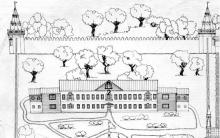
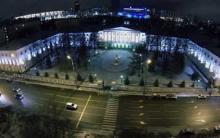
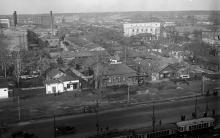
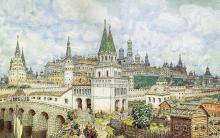
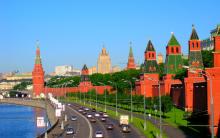
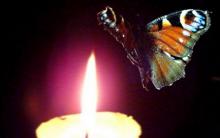




Funeral service and funeral of Archimandrite Kirill Pavlov
The meaning of Aesop's parable of tongues
Pages of Memories (Ariadne Ephron)
How to adjust vacation balances and how to change the number of vacation days per year from a certain date
Document "adjustment of receipt" Adjustment of receipt in 1s 8